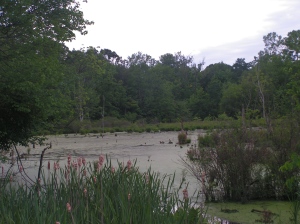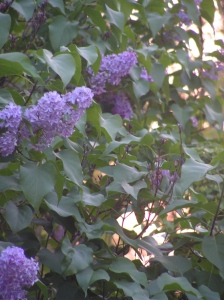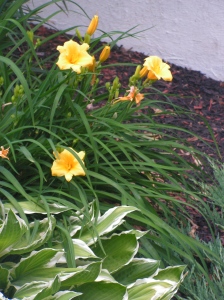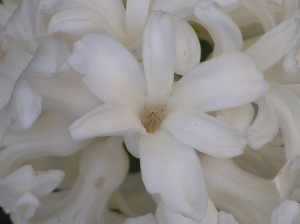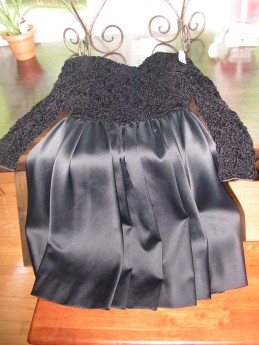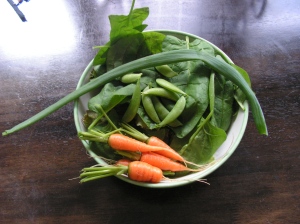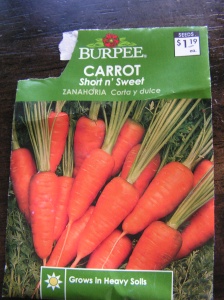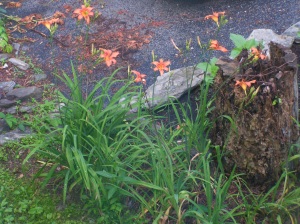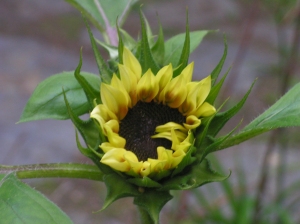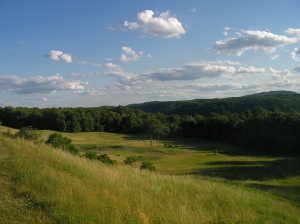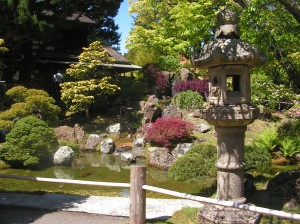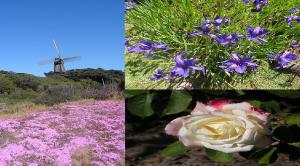Pop quiz: What is yellow, shiny, and often referred to by the always illustrious name “love apple”? Believe it or not, this early aphrodisiac (or so it was believed) is actually the ancestor of the modern gardener’s backyard staple, the tomato. Quite conversely, common lore told that the yellow, and eventually red orbs were actually poisonous (when they weren’t busy poisoning people, that is).
Nevertheless, whether amorous edible or potentially poison, once the idea of these garden gems caught on, their popularity has increased steadily over the years. According to The Tomato In America: Early History, Culture and Cookery, as of 1994 (the most recent statistic I have to share with all of you tomato fanatics), approximately twelve million tons of tomatoes were devoured annually in the United States. Just in case you were wondering, that works out to about eighteen pounds of fresh tomatoes and seventy pounds of processed tomatoes, per person, per year. That’s a boatload of marinara for a fruit (yes, its a fruit) once thought to be a deadly member of the nightshade family!
Now I know you’re thinking, “But my tomatoes look so innocent there out in my garden – who knew they had such a debaucherous past! I better keep a close eye on them…” And let me tell you, friend, you’re right! Allow me to take a few more moments of your time to fill you in on the secret life of tomatoes…
As one of the most popular backyard plants, there are also a ton of different shapes, varieties and cultivars, which Tantalizing Tomatoes:Smart Tips & Tasty Picks for Gardeners Everywhere does a great job of breaking down. In the meantime, though, we’ll take a look into some of the shenanigans that these garden regulars have been up to when no one’s looking…
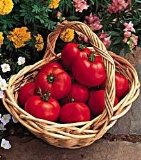
Early Girl Hybrid
At some point during my lifetime, which is now nearly twenty-seven years, there was a shift in the types of tomato
seeds and seedlings available on the market. As a child, I remember going to the store and buying tomatoes. And they were just that – tomatoes. Today, the question of whether to buy and grow organics or hybrids is a hot topic.
Contrary to some popular beliefs, hybrids are not necessarily “Frankenfoods”, but rather a cross breeding of different varieties. Typically, they’re bred for commercial use, and often feature qualities like disease resistance, thicker skin for transportation, and a uniform look. Unfortunately, companies including the likes of Monsanto, a well-known hybrid seed producin
g agricultural company, often turn out hybrids that develop with the unfortunate side effect of being sterile, as opposed to their open-pollinated cousins, heirlooms. I can’t say whether this is due to financial reasons (therefore basically in
debting farmers to corporations at the beginning of
the planting season for new seed) or simply an inadvertent consequence, but it makes them difficult to grow if you really like gardening (like me), are really thrifty (like me), or ever think about the possibility of eventual societal collapse (uhh…like me). Also, if you can grow hybrid plants from the previous year’s seed, it may not grow true to the parent plant. Its never happened to me, but I’d imagine then you may would have a Frankenfood!
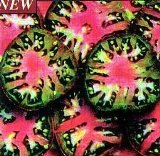
Black Sea Man Heirloom Tomato
Heirloom seeds, by contrast, have come into favor lately with the green movement. These are the seeds that your parents parents parents grew, way back in the day. The great thing about them is that they make tons of seeds, and do reproduce true to form. The only bummer is that they’re not bred with the same enhanced characteristics as hybrids, so they may be more susceptible to disease and other problems.
Whether you decide to choose hybrid or heirloom is a personal choice; there is no real right or wrong. Personally, we grow both. The hybrids definitely look to be a little stronger right now, but they were also started a little earlier They’re more mundane in their varieties, though, with only better boy and cherry right now at our house, while we have all different shapes and colors of heirlooms. We’re growing a purple one that I’m seriously looking forward to!
So, now that the hybrid/heirloom mess is settled, (You see! These tomatoes have a ton of secrets!) what about determinate v. indeterminate? In our garden, we love indeterminate tomatoes, who provide us with fruit all summer long. I don’t really have much of a case for determinates and their single harvest, but I suppose, since they only grow to a certain size, they’d be good for smaller gardens or containers.
Even beyond the types and times of tomatoes, there are still some tomato secrets that baffle even the most experienced gardener. For me, at least, one of those secrets is pruning. I know I should do it, its better for the fruit, but it still makes me sad to do. Nevertheless, I still prune, because my plants always grow like mad! What is it with tomato plants and sending up ridiculous amounts of new shoots? These things grow like the Blob on steroids! Being that they’re so prolific, something else I don’t understand is why these puppies, after originating on the coastal highlands of South America, weren’t cultivated until many centuries later! I mean, could you image a world without marinara sauce? I can’t.
Despite all its secrets, though, I could never be mad at my backyard tomatoes. They make fruit like almost none of my other plants can and they can sprout new roots along their stems! What’s not to love? So, tomatoes, I forgive you for your secrets. Besides, don’t we all have a few? According to The Tomato In America: Early History, Culture and Cookery, as of 1994 (the most recent statistic I have to share with all of you tomato fanatics), approximately twelve million tons of tomatoes were devoured annually in the United States. Just in case you were wondering, that works out to about eighteen pounds of fresh tomatoes and seventy pounds of processed tomatoes, per person, per year. That’s a boatload of marinara for a fruit (yes, its a fruit) once thought to be a deadly member of the nightshade family!
Now I know you’re thinking, “But my tomatoes look so innocent there out in my garden – who knew they had such a debaucherous past! I better keep a close eye on them…” And let me tell you, friend, you’re right! Allow me to take a few more moments of your time to fill you in on the secret life of tomatoes…
As one of the most popular backyard plants, there are also a ton of different shapes, varieties and cultivars, which Tantalizing Tomatoes:Smart Tips & Tasty Picks for Gardeners Everywhere does a great job of breaking down. In the meantime, though, we’ll take a look into some of the shenanigans that these garden regular’s have been up to when no one’s looking…
At some point during my lifetime, which is now nearly twenty-seven years, there was a shift in the types of tomato seeds and seedlings available on the market. As a child, I remember going to the store and buying tomatoes. And they were just that – tomatoes. Today, the question of whether to buy and grow organics or hybrids is a hot topic.
Contrary to some popular beliefs, hybrids are not necessarily “Frankenfoods”, but rather a cross breeding of different varieties. Typically, they’re are bred for commercial use, and often feature qualities like disease resistance, thicker skin for transportation, and a uniform look. Unfortunately, companies including the likes of Monsanto, a well-known hybrid seed producing agricultural company, often turn out hybrids that develop with the unfortunate side effect of being sterile, as opposed to their open-pollinated cousins, heirlooms. I can’t say whether this is due to financial reasons (therefore basically indebting farmers to corporations at the beginning of the planting season for new seed) or simply an inadvertent consequence, but it makes them difficult to grow if you really like gardening (like me), are really thrifty (like me), or ever think about the possibility of eventual societal collapse (uhh…like me). Also, if you can grow plants from the previous year’s seed, it may not grow true to the parent plant. Its never happened to me, but I’d imagine then you may would have a Frankenfood!
Heirloom seeds, by contrast, have come into favor lately with the green movement. These are the seeds that your parents parents parents grew, way back in the day. The great thing about them is that they make tons of seeds, and do reproduce true to form. The only bummer is that they’re not bred with the same enhanced characteristics as hybrids, so they may be more susceptible to disease and other problems.
Whether you decide to choose hybrid or heirloom is a personal choice; there is no real right or wrong. Personally, we grow both. The hybrids definitely look to be a little stronger right now, but they were also started a little earlier They’re more mundane in their varieties, though, with only better boy and cherry right now at our house, while we have all different shapes and colors of heirlooms. We’re growing a purple one that I’m seriously looking forward to!
So, now that the hybrid/heirloom mess is settled, (You see! These tomatoes have a ton of secrets!) what about determinate v. indeterminate? In our garden, we love indeterminate tomatoes, who provide us with fruit all summer long. I don’t really have much of a case for determinates and their single harvest, but I suppose, since they only grow to a certain size, they’d be good for smaller gardens or containers.
Even beyond the types and times of tomatoes, there are still some tomato secrets that baffle even the most experienced gardener. For me at least, one of those secrets is pruning. I know I should do it, its better for the fruit, but it still makes me sad to do it. Nevertheless, I still prune, because my plants always grow like mad! What is it with tomato plants and sending up ridiculous amounts of new shoots? These things grow like the Blob on steroids! Being that they’re so prolific, something else I don’t understand is why these puppies, after originating on the coastal highlands of South America, weren’t cultivated until many centuries later! I mean, could you image a world without marinara sauce? I can’t. I won’t!
Despite all its secrets, though, I could never be mad at my backyard tomatoes. They make fruit like almost none of my other plants can and they can sprout new roots along their stems! What’s not to love? So, tomatoes, I forgive you for your secrets. Besides, don’t we all have a few?
